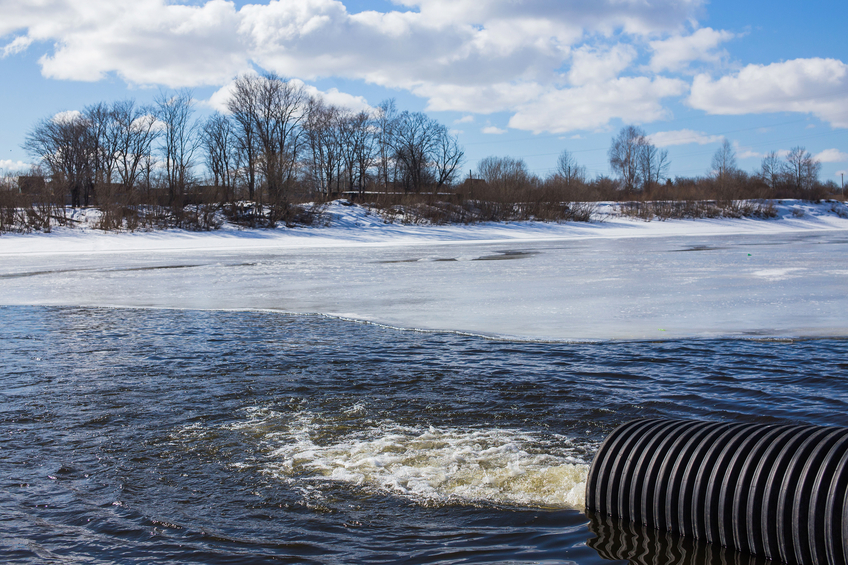Pennsylvania Civil and Ethics 24 PDH Discount Package 3
Courses in this Package
Building Terrorism Mitigation - Site Layout and Design (F05-002)
Continuously Reinforced Concrete Pavement (C10-006)
Evaluation and Design of Concrete Repairs (C05-008)
Integrating Green Infrastructure into Local Hazard Mitigation Plans (C02-082)
Determining Negligence in Engineering Failures (LE2-012)

This online engineering PDH course discusses site-level considerations for development. The intent of this guidance is to provide concepts for integrating land use planning, landscape architecture (vegetation, landforms, and water), site planning, and other strategies to mitigate the design basis threats as identified via the risk assessment.
Integrating security requirements into a larger, more comprehensive approach necessitates achieving a balance among many objectives such as reducing risk; facilitating proper building function; aesthetics and matching architecture; hardening of physical structures beyond required building codes and standards; and maximizing use of non-structural systems.
This 5 PDH online course is applicable to engineers, planners, architects, landscape designers, construction and operations personnel, security and law enforcement agents, as well as consultants and contractors to gain a better understanding in identifying and implementing crucial asset protection measures when planning and designing the site against potential terrorist attacks.
This PE continuing education course is intended to provide you with the following specific knowledge and skills:
- Planning the use of land
- Selection the site
- Orienting the buildings on the site
- Integrating vehicle access, control points, physical barriers, landscaping and parking,
- Protecting utilities for threat mitigation
In this professional engineering CEU course, you need to review Chapter 2 "Site Layout and Design Guidance" of the FEMA Publication, "Mitigating Potential Terrorist Attacks Against Buildings" (FEMA 426).
Upon successful completion of the quiz, print your Certificate of Completion instantly. (Note: if you are paying by check or money order, you will be able to print it after we receive your payment.) For your convenience, we will also email it to you. Please note that you can log in to your account at any time to access and print your Certificate of Completion.

This online engineering PDH course discusses the most common guidelines on the design, construction, maintenance, and rehabilitation of continuously reinforced concrete pavement (CRCP).
Continuously reinforced concrete pavement (CRCP) was introduced in the United States almost 100 years ago when the U.S. Bureau of Public Roads (now the Federal Highway Administration) constructed a CRCP test section on Columbia Pike in Arlington, Virginia. Since then, CRCP has been constructed in many states in the U.S. and in a number of other countries. As experience with the design and construction of CRCP has grown, a variety of lessons learned through practical experience and research have contributed to the development of best practices for CRCP throughout its life cycle.
Today, CRCP is designed and constructed as a pavement of choice for long-life performance, recognizing that initial smoothness will be maintained for decades and that maintenance during that time will be minimal.
This 10 PDH online course is applicable to civil engineers who are interested in learning about the design, construction and maintenance of CRCP as an ideal, long-life pavement solution for highly-trafficked and heavily-loaded roadways.
This PE continuing education course is intended to provide you with the following specific knowledge and skills:
- Familiarizing with the structure and design fundamentals of CRCP
- Learning about longitudinal and transverse reinforcement and the characteristics of reinforcing steel
- Learning about the different elements associated with CRCP construction
- Familiarizing with the performance of CRCP in the U.S. and other countries
- Gaining an overview of CRCP rehabilitation strategies, restoration and resurfacing
- Exploring the use of CRCP as an overlay
Upon successful completion of the quiz, print your Certificate of Completion instantly. (Note: if you are paying by check or money order, you will be able to print it after we receive your payment.) For your convenience, we will also email it to you. Please note that you can log in to your account at any time to access and print your Certificate of Completion.

This online engineering PDH course provides guidance on evaluating the condition of the concrete in a structure, relating the condition of the concrete to the underlying causes of that condition, and selecting an appropriate repair material and method for any deficiency found. A basic understanding of underlying causes of concrete deficiencies is essential to perform meaningful evaluations of concrete structures.
This 5 PDH online course is applicable to civil, geotechnical and structural engineers, as well as design and construction personnel working on construction projects involving evaluation and repair of concrete structures.
This PE continuing education course is intended to provide you with the following specific knowledge and skills:
- Evaluation of concrete in concrete structures
- Understanding the underlying causes of distress and deterioration in concrete
- Planning and design of concrete repairs
In this professional engineering CEU course, you need to review Chapters 2, 3 and 4 of the US Corps of Engineers Publication EM 1110-2-2002, "Evaluation and Repair of Concrete Structures".
Upon successful completion of the quiz, print your Certificate of Completion instantly. (Note: if you are paying by check or money order, you will be able to print it after we receive your payment.) For your convenience, we will also email it to you. Please note that you can log in to your account at any time to access and print your Certificate of Completion.

This online engineering PDH course provides basic information on how communities can integrate green infrastructure into their Local Hazard Mitigation Plans.
Communities across the United States are facing a variety of challenges, from outdated infrastructure, to water quality protection, to the need to increase community resilience and mitigate the impacts of flooding and other hazards. These communities are looking for multi-purpose solutions to these challenges.
Green infrastructure is one approach to improve water quality and address flooding challenges. Green infrastructure yields many benefits, including improved water quality, reduced flooding, infrastructure cost savings, and healthier communities. While green infrastructure alone may not fully address these issues, however, it adds capacity, flexibility, and resilience to other infrastructure systems and provides multiple community benefits.
This 2 PDH online course is applicable to civil, environmental and stormwater engineers who are interested in examining how communities can integrate green infrastructure into their Local Hazard Mitigation Plans.
This PE continuing education course is intended to provide you with the following specific knowledge and skills:
- Familiarizing with the concept of developing a Local Hazard Mitigation Plan
- Understanding the issues, requirements and evolution of stormwater management
- Learning how to integrate green infrastructure into the mitigation planning process
- Identifying important considerations for communities interested in pursuing this approach
- Exploring the green infrastructure integration efforts in the area under study
Upon successful completion of the quiz, print your Certificate of Completion instantly. (Note: if you are paying by check or money order, you will be able to print it after we receive your payment.) For your convenience, we will also email it to you. Please note that you can log in to your account at any time to access and print your Certificate of Completion.

This engineering online PDH course will establish conditions under which, when an engineering failure has occurred, it can be attributed to negligence.
Five causes of failure are proposed: negligence, rare failure mode, overlooked failure mode, new (previously unrecognized) failure mode, and incorrect assessment of a known risk. Negligence is the only cause that involves failing in an ethical duty. These concepts are illustrated with five case studies of failures ranging from gross negligence to absolutely unforeseeable events: 1) the Great Boston Molasses Flood of 1919, for which a new possible cause was identified 95 years later (2014); 2) a building collapse in Bangladesh in which over 1,000 people died—one of the worst structural engineering disasters in history; 3) a meteorite strike of a private residence; 4) the crash of the British-French Concorde supersonic airliner, caused by an unlikely tire blow-out; and 5) radiation overdoses received by patients treated by the Thorac-25 medical linear accelerator, caused by errors in the software controlling the machine.
The 2 PDH online course is intended for engineers concerned with ethical behavior in engineering practice.
This PE continuing education course is intended to provide you with the following specific knowledge and skills:
- Understanding the definitions of negligence and standard of care
- Relating safety to risk
- Knowing the principle of Knightian uncertainty
- Avoiding the retrospective fallacy in accident investigations
- Avoiding the fallacy, in accident investigations, of assuming perfect engineering practice
- Using the results of failure investigations appropriately
- Being aware of the negative effects of punishment on learning from accidents
- Categorizing the general causes of engineering failures
Upon successful completion of the quiz, print your Certificate of Completion instantly. (Note: if you are paying by check or money order, you will be able to print it after we receive your payment.) For your convenience, we will also email it to you. Please note that you can log in to your account at any time to access and print your Certificate of Completion.